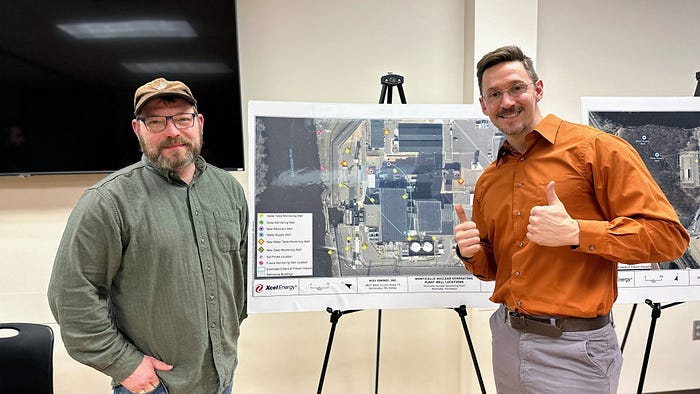Author: Matthew Meyer
Last week, I attended an Xcel Energy open house to answer questions for local residents about the recent tritium leak from the Monticello plant. The event was well-staffed by communications officers from both Xcel and the MN Department of Health, who were excellent at engaging with those in attendance. I attended to observe local residents’ concerns and to be of help in answering questions if needed.

During the event, I had a challenging conversation with a woman named Abby, who was vehemently against the existence of the nuclear plant and nuclear technology altogether. I looked at this encounter as an opportunity to sharpen my advocacy skills.
To summarize to the best of my recollection:
The conversation began with accusations about how the nuclear plant recklessly exposed the local residents to harmful radiation. She understood the recent tritium leak as additional evidence to confirm her beliefs.
My first response was to bring up that radiation in small doses is something that we are exposed to daily. In fact, she is receiving a small dose of radiation as we speak. The tritium leak is fully contained at the plant site, but even if it weren’t, it wouldn’t be possible to pose a significant health risk at the concentrations we are discussing. I attempted to put the dosage in perspective by using examples and analogies. One of them being, the total amount of tritium released is equal to about half of what is in a typical EXIT sign.
This answer did not provide any comfort, so I asked her: “If we weren’t to use nuclear energy, what do you think is our best substitute?”
Abby’s answer surprised me. She said she supports keeping our coal plants online and using carbon capture and storage. She vaguely described how putting the carbon back in the ground will benefit soil health and plant growth. Naturally inquisitive, I asked her to describe that relationship a little more. Those details were not something she was able to answer.
After a few more discovery questions, I was able to hone in on issues where we could share common ground. I pointed them out to her: We both value reliability, cost, and cleaning up our electricity production. So I shared why I supported nuclear and framed it around these issues.
Eventually, the “extremely dangerous” nuclear waste came up, and this is where I could finally see some progress in the conversation! I discussed how nuclear energy is the only energy source that accounts for all of its waste; not only that, but it has done so with a perfect safety record. I also discussed how nuclear “waste” sits there safely as “spent nuclear fuel” and that there are a number of viable ways to address it, including reprocessing/recycling which would mean even more energy security because we already have many years of fuel already available. But for now, it just sits there, and there is plenty of room for more of it to sit there while we work towards a more permanent solution.
Elaborating further, Abby mentioned the importance of cost, and I discussed that coal is cheap because it externalizes much of its costs into the environment. If we were to add carbon capture and storage, the costs would go up.
In conclusion, I believe it is important that we have conversations in the public sphere supporting nuclear energy with those who are skeptical. By doing so, we can help dispel myths and misconceptions. Furthermore, these conversations can help build trust and understanding between different groups.
While I’m certain I did not change Abby’s mind through this encounter, I can tell I left her with a new perspective that she may ponder on for a bit. Perhaps after a few more encounters like this, she may shift her paradigm more favorably towards nuclear energy.

